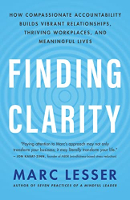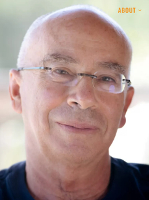
Image by Fernando ell_bolla
Tamban-kan is a Japanese expression that means “a person who carries a board on their shoulder.” This describes someone who understands things from a limited perspective, a person who holds tightly to a particular view. It could describe someone who sees themselves as a failure while ignoring their successes and dismissing the miracle of being alive. It could describe someone who thinks they are only an ordinary human leading an ordinary life with nothing remarkable to offer others or the world.
At some point, maybe often, we are all a tamban-kan. So in every situation, our aim should be to remove the board we carry on our shoulder so we can see, feel, and experience that we are also holy, sacred, connected to the cosmos, and with vast abilities, including the ability to shape and influence our shared reality.
Finding Clarity
Finding clarity is a path open to all humans, regardless of our backgrounds or identities. When we remove the board from our shoulder, a world of possibilities opens — the possibility of living fully both in this ordinary world and in the world of depth and sacredness, the world of our heart.
The benefits of this work are many:
-
It’s a path of self-development, self-understanding, and emotional and spiritual growth. We learn about ourselves through our relationships.
-
It’s a way of deepening our relationships and cultivating greater connection. So often we skim the surface of our relationships to protect ourselves or because we lack the skills or courage to risk more.
-
It leads to a more effective workplace. It helps align actions with results by fostering greater trust, innovation, and collaboration.
-
It’s a path toward creating a shared vision and learning and growing together.
It is a core part of creating great cultures — ones that are highly caring and highly focused on results.
-
It helps heal rifts, divisions, and conflicts in our families and important relationships by integrating caring and love with integrity and openness.
My Approach: A Summary and Cheat-Sheet
Here is a cheat sheet for finding clarity and practicing compassionate accountability:
Start by stopping:
Knowing and understanding ourselves takes time and effort, but it is so worth it! Stopping, really stopping — such as through a regular meditation or reflection practice — is like hitting the reset button. With each inhale, we notice our thoughts, our stories, our emotions, fears, and desires, and we become familiar with our patterns. Then with every exhale, we let go of everything, including our ideas of right and wrong, of good and bad, and our ideas of who we are as well as our self-help plans for others. To find clarity, start by stopping.
Turn toward inner conflicts:
Engaging with our inner conflicts is an important part of growth and development. We all contain many parts — success and failure, optimism and pessimism, introversion and extroversion. Facing, not avoiding, inner conflicts helps us appreciate our own depth, complexity, and flexibility. Understanding our paradoxes and contradictions is the path to clarity and freedom.
Engage with outer conflicts with compassion:
Tangles, conflicts, and misunderstandings with others provide opportunities for growth, learning, and intimacy. We can notice any tendencies to avoid conflict, and instead lean in. Listen. Be curious. Experiment with ways to address conflict, and practice self-compassion.
Strive toward alignment via accountability:
Accountability helps us align our actions with our goals. This means holding ourselves and others accountable for our expectations and choices, for the process, and for how we respect and take care of our relationships.
Cultivate courage:
By letting go of and transforming desires and fears and avoidance patterns, we cultivate courage.
Prioritize relationships:
Compassionate accountability is a practice of cultivating connection, understanding, trust, and real intimacy. The apparent goal is to accomplish important things together, but at heart, it’s about fostering healthy, vibrant, and effective relationships.
Build supportive communities:
At its best, this work builds healthy communities that can accommodate and support everyone to achieve shared goals. This expresses itself differently in different contexts: at work, in families, among friends, on sports teams, in therapeutic environments, and so on. Being part of a community not only feels good, but it is a tremendous way to learn and cultivate listening, understanding, and alignment — even in the midst of inevitable challenges, misalignments, and breakdowns.
Practice! It’s all practice:
In stillness and in movement, at work and at home, every moment provides an opportunity to learn, to grow, to understand. Work, family, and relationships are terrific cauldrons for cultivating self-awareness and insight. Everything in our lives is practice.
Expect change to happen quickly and gradually:
When it comes to inner and outer growth, it helps to be both patient and impatient. On the one hand, we can’t expect instant results. Lasting change requires patience and diligence. On the other hand, don’t wait. The moment is now. By continually seeking change, we allow for it to unfold in sudden and surprising ways.
Small Changes Lead to Enormous Results
When I teach meditation to Google engineers, one question I’m often asked is, “What is the least amount of time I can meditate and have it make a difference?”
These are not lazy people. Many are driven to succeed and have been almost since birth. This is really an engineering question about leverage: What is the least amount of effort I can expend that will result in the most change? It’s the same question that Archimedes, the great mathematician and physicist of early history, explored in his proof of the principle of the lever. As he famously proclaimed, “Give me a lever long enough and a fulcrum on which to place it, and I shall move the world.”
I usually respond to the Google engineers, “One breath. One breath with the full awareness of breathing, and letting go of who you think you are, can make an enormous difference in your life.”
The fulcrum of human development is how we approach changing our limiting and mistaken beliefs and shifting our identity. If we shift one small misunderstanding about ourselves, our identity and even our whole world might shift. We might change from “someone who writes” to being “a writer,” from “someone who is impatient” to “a good listener.”
Shifting our identity, our own view of ourselves, is where we gain the most leverage for transforming greed, aversion, and pain into possibility, acceptance, and satisfaction. In a moment, we can shift from someone who considers themselves stuck or “a failure” to someone who is learning and discovering. Bringing awareness to our patterns, not only through our thinking but through the physical, body-engaged practice of breath and meditation, is a tremendous way to create leverage for change in our identity and behavior.
Solutio is what medieval alchemists called the process of making something more fluid, so it is more workable and able to be transformed. When a problem is difficult, we describe it as “hard.” When it’s been transformed, we say it’s been “solved.” One breath, one insight, one small shift can be like applying WD-40 to the places in our thinking and in our hearts that have hardened.
Another Question... Same Answer...
Another question that arises when I’m doing this work — particularly with individuals, teams, and company cultures — is whether change primarily occurs through specific insights and important “aha” moments or happens gradually over time through ongoing hard work and practice. My response is yes: Change occurs both suddenly and gradually.
Zen teacher Shunryu Suzuki often compared the rate of change as being like walking in the midst of fog. You hardly notice anything happening until at some point you are surprised to find you are wet.
The practices of finding clarity and of compassionate accountability require us to be both confident and humble, so that we move forward with courage but without necessarily knowing all the answers ahead of time. My advice echoes what the Buddha was fond of saying: Test these concepts, tools, and practices, and see how they work for you.
Adapted from the book Finding Clarity.
Copyright ©2023 by Marc Lesser.
Reprinted with permission from New World Library.
Article Source:
Finding Clarity: How Compassionate Accountability Builds Vibrant Relationships, Thriving Workplaces, and Meaningful Lives
by Marc Lesser. For Marc Lesser the key to healthy relationships and effective workplaces is compassionate accountability — a practical and trainable way to clarify and achieve shared visions of success. Numerous examples include:
For Marc Lesser the key to healthy relationships and effective workplaces is compassionate accountability — a practical and trainable way to clarify and achieve shared visions of success. Numerous examples include:
• facing rather than avoiding conflict for the long-term benefit of all.
• working with and through difficult emotions with clarity, care, and connection.
• understanding the stories we live by and evaluating whether they’re serving us well.
• learning to listen and lead in ways that align with our mission and values.
Click here for more info and/or to order this paperback book. Also available as an Audiobook and as a Kindle edition.
About the Author
 Marc Lesser, the author of Finding Clarity, is a CEO, executive coach, trainer, and Zen teacher with more than twenty-five years of experience as a leader supporting leaders to reach their full potential, as business executives and as full, thriving human beings. He is currently CEO of ZBA Associates, an executive coaching and development organization.
Marc Lesser, the author of Finding Clarity, is a CEO, executive coach, trainer, and Zen teacher with more than twenty-five years of experience as a leader supporting leaders to reach their full potential, as business executives and as full, thriving human beings. He is currently CEO of ZBA Associates, an executive coaching and development organization.
Visit him online at marclesser.net.
More Books by the author.




























